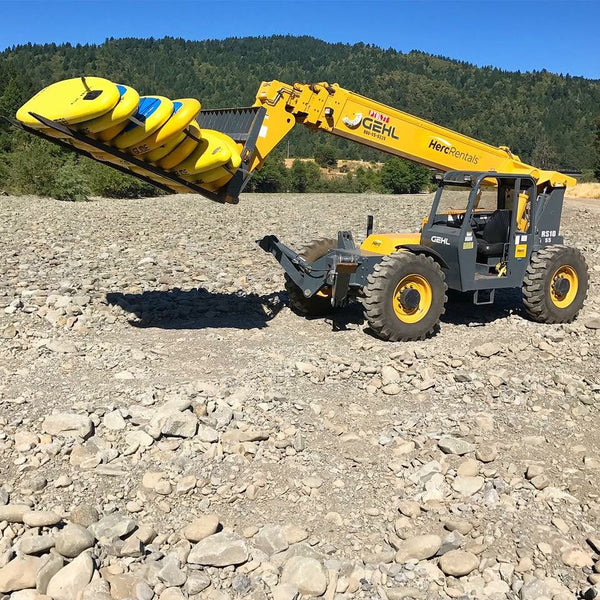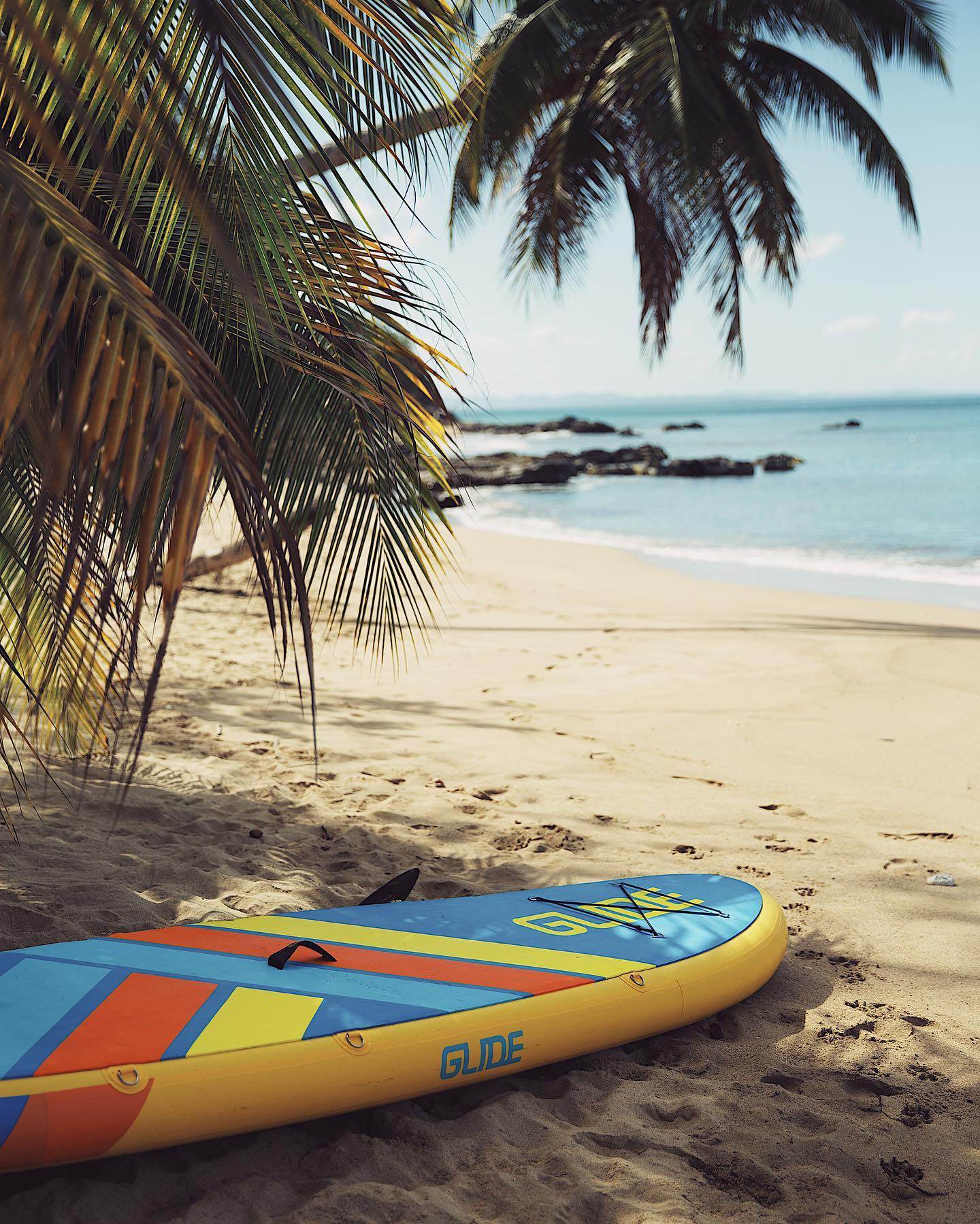
Storing Your Glide Inflatable Paddle Board: Tips for Longevity
Whether you’re storing your Glide inflatable paddle board for a few days or the whole winter, these expert tips will keep it in peak shape season after season.
Proper storage is key to making your inflatable paddle board last.
his guide walks you through when to store your board inflated or deflated, how to roll it safely, and what conditions to avoid.
Learn the best practices for both short-term and winter storage, plus expert advice from Glide to keep your iSUP performing perfectly year after year.
Table of contents
Proper storage is one of the simplest — and most overlooked — ways to extend the life of your inflatable paddle board. Your Glide iSUP is built for performance, but just like any piece of high-quality gear, it needs thoughtful handling when not in use.
Whether you’re storing your inflatable paddle board overnight or for the entire winter, how and where you keep it makes a huge difference in maintaining its shape, rigidity, and long-term durability. Think of this as part two of your Glide care routine — complementing the cleaning and maintenance guide you (hopefully) read first.

Should You be Storing your Inflatable Paddle Board Inflated or Deflated?
This is one of the most common questions we hear from paddlers — and the answer depends on how long you’re storing your board.
Short-Term Storage (a few days to a couple of weeks):
It’s perfectly fine to leave your Glide board inflated, as long as you follow these rules:
-
Keep it out of direct sunlight — UV rays can soften PVC over time.
-
Store it indoors or shaded, and lower the PSI slightly (around 10–12 PSI).
-
Elevate it off the ground with a rack or soft padding to avoid pressure points.
Long-Term Storage (more than a few weeks):
For extended storage, it’s best to deflate your board. Doing so relieves stress on the seams, rails, and PVC layers. Don’t worry — Glide boards are designed to be inflated and deflated frequently without losing performance.
💡 Pro Tip: If you’re planning to store your board for an entire season, give it a full clean and apply UV protectant before rolling it up.
Step-by-Step: How to Deflate and Store Your Paddle Board
Proper prep before storage is the difference between a board that’s ready for adventure and one that smells like mildew come spring.
1. Clean It Thoroughly
After your final paddle, rinse your board with fresh water and a mild soap.
-
Focus on the fins, valve, and traction pad.
-
Remove all sand, dirt, and salt — especially from saltwater sessions.
-
Avoid harsh cleaners or bleach that can degrade the PVC.
2. Let It Dry Completely
Moisture is your board’s biggest enemy during storage.
-
Leave it out of direct sunlight but in a breezy, shaded area.
-
Make sure no water remains in seams or under the deck pad.
-
Even a small bit of dampness can cause mold or odor over time.
3. Remove Accessories
Take off your fins, leash, and paddle blade attachments.
-
Store them separately in a labeled bag.
-
Check for cracks or damage before packing them away.
4. Roll It Up Properly
Lay your board flat on a clean surface, fold it lengthwise once, then roll from the nose toward the valve.
-
Keep it snug but not overly tight — this prevents stress on seams.
-
Make sure no sharp edges (like fin boxes) press against the PVC.
💡 If your board has a carbon fiber stringer or rail reinforcement, be especially gentle during rolling.

5. Use the Right Bag
Store your rolled board in the Glide backpack or travel bag. It’s designed to:
-
Protect against dust, scratches, and UV light.
-
Keep it neatly rolled and compact.
-
Provide ventilation to reduce trapped moisture.
If you don’t have your original bag, a breathable gear tote or padded board cover also works. Avoid airtight plastic bins — they can trap humidity.
Where to Store Your Inflatable Paddle Board
Your storage space can make or break your board’s lifespan.
Ideal Conditions:
-
Cool, dry, and shaded
-
Away from direct sunlight or heat sources
-
Free from sharp objects, clutter, or heavy items on top
Avoid attics, damp basements, or uninsulated garages with major temperature swings. If your board stays inflated, store it on a rack or elevated surface, not directly on concrete.
Short-Term Storage: Keeping It Inflated
If you’re planning to paddle again soon, storing your board inflated can save setup time — just take a few precautions:
-
Reduce PSI slightly (especially in warm rooms or garages).
-
Keep it shaded and away from windows or vents.
-
Elevate it on foam blocks, yoga mats, or racks to prevent warping.
💡 Never leave a fully inflated board in a hot car or under direct sunlight — expansion can increase PSI enough to damage seams or valves.
Long-Term or Winter Storage
If you’re packing your Glide iSUP away for the season:
-
Deflate to about 8 PSI or roll it loosely.
-
Keep it in a temperature-stable room — ideally between 40°F and 85°F.
-
Store it horizontally (flat or on its side), not standing upright.
-
Before sealing it in the bag, insert a silica gel pack to absorb any leftover moisture.
💡 Before paddling again in spring, inflate your board to 15–20 PSI and check for leaks, seam separation, or valve hiss.

Final Thoughts: Store It Right, Paddle Longer
Good storage habits are one of the easiest ways to extend your paddle board’s life — and protect your investment. Glide boards are built to last, but consistent care ensures they perform like new year after year.
By cleaning, drying, and storing your iSUP properly, you’ll avoid common issues like seam fatigue, fading, or mildew — and be ready to hit the water at a moment’s notice.
Your board should always feel like it’s fresh out of the box — even after a long winter. Store it smart, and it will be your adventure partner for many seasons to come.
FAQs: Storing an Inflatable Paddle Board
Can I leave my inflatable SUP inflated all season?
Yes, as long as it’s shaded, cool, and not over-pressurized. Reduce PSI slightly when not in use.
Is it safe to store my SUP in the garage?
Yes, if your garage stays dry and doesn’t get too hot or cold. Avoid direct sunlight or near vehicles.
Should I store my board rolled or flat?
Either works — just ensure it’s dry, cool, and not under pressure from other gear.
What if I don’t have much space?
Deflate and roll loosely. Glide’s travel bag fits easily under most beds or closets.
How often should I clean before storage?
Rinse and dry your board after every trip — and do a deep clean before long-term storage.





